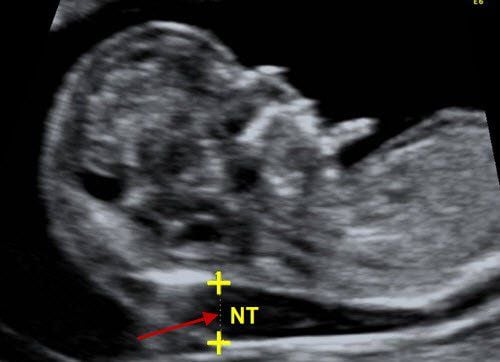This article was professionally consulted by Master, Doctor Ly Thi Thanh Nha - Department of Obstetrics and Gynecology - Vinmec Da Nang International General Hospital.
A short uterus is one of the causes of premature birth and miscarriage, so ultrasound to measure cervical length is an important step to monitor health and to know if the length of the cervix has changed during pregnancy.
1. Cervix and the role of the cervix
The cervix is the entrance to the uterus, the intermediate place connecting the uterus to the vagina. This part plays an extremely important role throughout the 40 weeks of pregnancy until the birth process. During pregnancy, the length of the cervix will increase, and at the same time, the cervix will thicken according to the change in weight of the fetus.
When the fetus is in the uterus, the cervix will close tightly thanks to the mucus plug to protect the uterus, keeping it closed and sterile, ensuring the development of the fetus.
During labor, the cervix will shorten and open about 1 - 10cm so that the baby can crawl out of the uterus and be born.
2. How short is the length of the cervix?
For a normally developing girl, the cervix is only about 30mm long, round, and firm. However, when pregnant, the length of the cervix will begin to change.
As the weight of the fetus increases, the cervix will lengthen to hold the fetus firmly in the uterus. In the last weeks of pregnancy, the cervix will gradually shorten to make the birth process easier. After giving birth, the length of the cervix will gradually return to normal. The length of the cervix during pregnancy is considered normal if it is between 30 - 50mm, less than 25mm is a short cervix.
For an accurate diagnosis, pregnant women need to have an ultrasound to measure the length of the cervix through a vaginal probe.

3. How does the length of the cervix change during pregnancy?
A short cervix can occur due to the following reasons:
- Due to congenital factors, women with underdeveloped reproductive organs, deformed uterus, infantile uterus...
- Due to cervical resection surgery or cone surgery.
In addition, the length of the cervix can change during pregnancy. This depends on the following factors:
- Due to biological differences in women
- Complications due to bleeding during pregnancy
- Infection or inflammation of the uterine lining
- A weak cervix is not able to stretch.
4. Risks encountered when the length of the cervix is short
A short cervix will not affect the physiological problems or the chance of conception. However, this is the cause of the following phenomena:
- Increased risk of premature birth, miscarriage, and premature labor, the shorter the cervix, the higher the risk of premature birth.
- The mother has some abnormalities such as diabetes, hypertension, and proteinuria...

5. Ultrasound to measure cervical length
To know exactly their condition, pregnant women need to have an ultrasound to measure the length of the cervix as prescribed by the doctor. In particular, transvaginal ultrasound is an easy-to-observe technique and has higher accuracy than transabdominal ultrasound.
Transvaginal ultrasound also helps doctors detect changes and dilation of the cervix... Not only that, this method also ensures safety, comfort and does not increase the risk of infection even when the pregnant woman has a premature rupture of membranes.
Thus, ultrasound to measure cervical length is an indispensable step to promptly detect the condition of a short cervix, thereby having appropriate treatment measures. The middle 3 months of pregnancy is the period of strong fetal development. Pregnant women need to:
- Comprehensive screening for fetal malformations using superior 4D ultrasound technology.
- Screening for gestational diabetes to avoid causing many dangerous complications for both mother and baby.
- Control the mother's weight appropriately to assess the health status of the pregnant woman and the development of the fetus.
- Understand the signs of premature labor (especially in women with multiple pregnancies or a history of miscarriage or premature birth) to receive timely treatment to maintain pregnancy.
To arrange an appointment, please call HOTLINE or make your reservation directly HERE. You may also download the MyVinmec app to schedule appointments faster and manage your reservations more conveniently.
To arrange an appointment, please call HOTLINE or make your reservation directly HERE. You may also download the MyVinmec app to schedule appointments faster and manage your reservations more conveniently.









